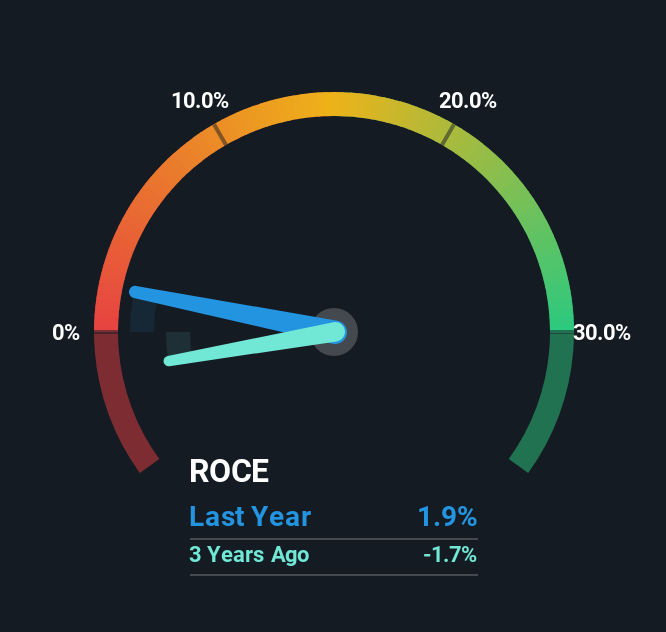- South Korea
- /
- Consumer Durables
- /
- KOSDAQ:A014470
Bubang's (KOSDAQ:014470) Returns On Capital Are Heading Higher
What trends should we look for it we want to identify stocks that can multiply in value over the long term? One common approach is to try and find a company with returns on capital employed (ROCE) that are increasing, in conjunction with a growing amount of capital employed. Put simply, these types of businesses are compounding machines, meaning they are continually reinvesting their earnings at ever-higher rates of return. Speaking of which, we noticed some great changes in Bubang's (KOSDAQ:014470) returns on capital, so let's have a look.
Understanding Return On Capital Employed (ROCE)
For those that aren't sure what ROCE is, it measures the amount of pre-tax profits a company can generate from the capital employed in its business. Analysts use this formula to calculate it for Bubang:
Return on Capital Employed = Earnings Before Interest and Tax (EBIT) ÷ (Total Assets - Current Liabilities)
0.019 = ₩3.6b ÷ (₩271b - ₩80b) (Based on the trailing twelve months to March 2025).
So, Bubang has an ROCE of 1.9%. Ultimately, that's a low return and it under-performs the Consumer Durables industry average of 6.8%.
View our latest analysis for Bubang

While the past is not representative of the future, it can be helpful to know how a company has performed historically, which is why we have this chart above. If you're interested in investigating Bubang's past further, check out this free graph covering Bubang's past earnings, revenue and cash flow.
What The Trend Of ROCE Can Tell Us
Shareholders will be relieved that Bubang has broken into profitability. While the business was unprofitable in the past, it's now turned things around and is earning 1.9% on its capital. While returns have increased, the amount of capital employed by Bubang has remained flat over the period. That being said, while an increase in efficiency is no doubt appealing, it'd be helpful to know if the company does have any investment plans going forward. After all, a company can only become a long term multi-bagger if it continually reinvests in itself at high rates of return.
In Conclusion...
To sum it up, Bubang is collecting higher returns from the same amount of capital, and that's impressive. Astute investors may have an opportunity here because the stock has declined 16% in the last five years. That being the case, research into the company's current valuation metrics and future prospects seems fitting.
On a separate note, we've found 3 warning signs for Bubang you'll probably want to know about.
While Bubang may not currently earn the highest returns, we've compiled a list of companies that currently earn more than 25% return on equity. Check out this free list here.
Valuation is complex, but we're here to simplify it.
Discover if Bubang might be undervalued or overvalued with our detailed analysis, featuring fair value estimates, potential risks, dividends, insider trades, and its financial condition.
Access Free AnalysisHave feedback on this article? Concerned about the content? Get in touch with us directly. Alternatively, email editorial-team (at) simplywallst.com.
This article by Simply Wall St is general in nature. We provide commentary based on historical data and analyst forecasts only using an unbiased methodology and our articles are not intended to be financial advice. It does not constitute a recommendation to buy or sell any stock, and does not take account of your objectives, or your financial situation. We aim to bring you long-term focused analysis driven by fundamental data. Note that our analysis may not factor in the latest price-sensitive company announcements or qualitative material. Simply Wall St has no position in any stocks mentioned.
About KOSDAQ:A014470
Bubang
Manufactures and sells household appliances, including home and kitchen appliances in South Korea.
Good value with adequate balance sheet.
Market Insights
Community Narratives



